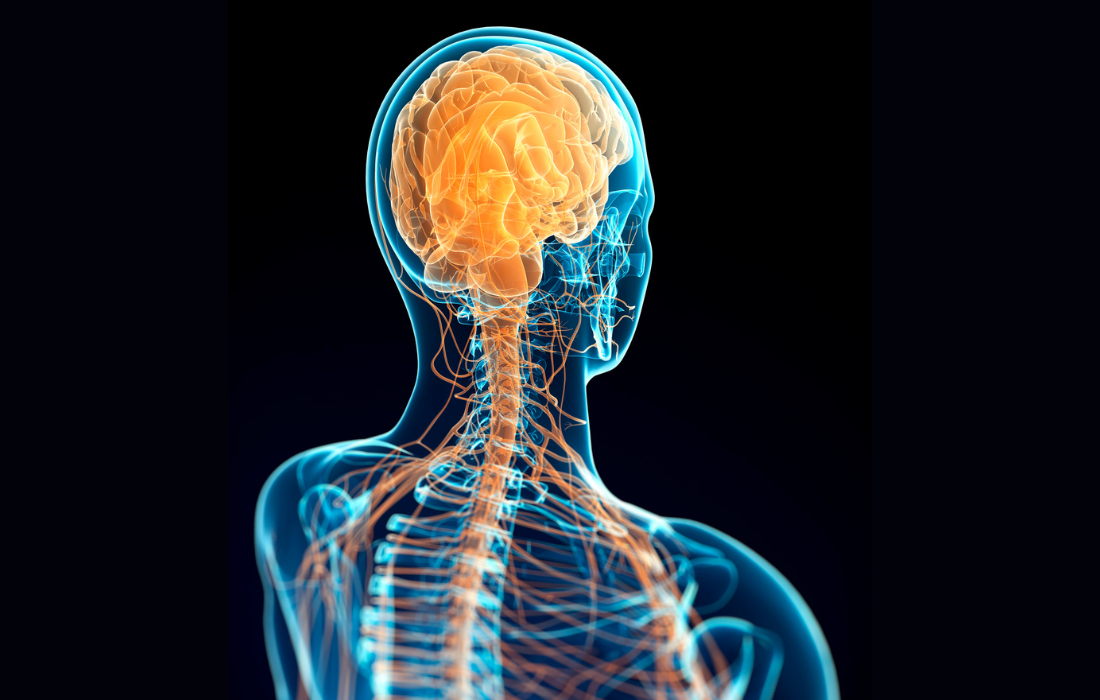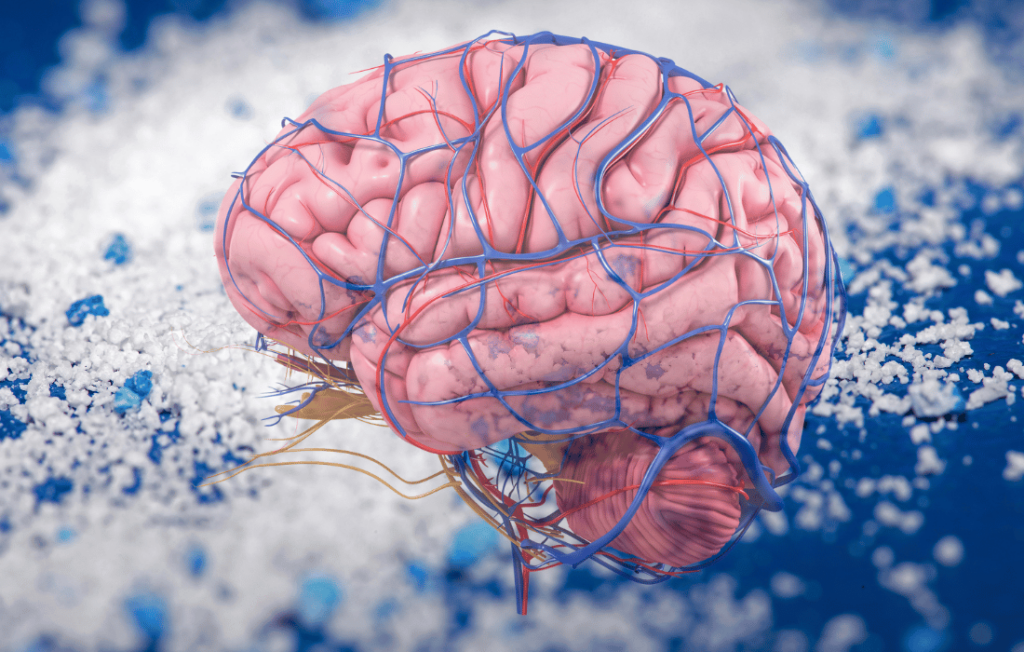Welcome to a closer look at a topic that’s increasingly on people’s minds, or at least will be very soon—central nervous system and neurological disorders. It’s become clear that we’re facing a global crisis. The latest studies, including a comprehensive analysis by the US-based Institute for Health Metrics and Evaluation (IHME), reveal some eye-opening trends. Disorders like strokes, migraines, and dementia have now outpaced heart disease as the primary cause of poor health worldwide. This shift reflects advancements in health classification, demographic changes, and the challenges posed by our aging population.
On a more personal note, this topic holds a special significance for me. I’ve had my own battles with neurological and central nervous system dysregulation since childhood. While there are a couple of genetic factors that played a significant role, my experiences were further complicated by sports concussions and destructive partying habits in my youth. These challenges have fueled my interest and drive to understand more about this critical aspect of health. By sharing insights and the latest research, I hope to shed light on the importance of neurological health and encourage a greater focus on addressing these issues globally.
The Growing Burden of Neurological Disorders
Global Impact
According to the Global Burden of Disease Study 2021 (GBD 2021), neurological conditions are now the leading cause of disability and lost years of healthy life (DALYs) worldwide. Over 3.4 billion individuals, or 43% of the global population, were affected by these conditions in 2021—a significant increase from past estimates. The total DALYs for nervous system disorders globally reached over 443 million in 2021, marking an 18% increase from 1990.
Major Conditions Contributing to the Burden
Stroke: The reclassification of stroke from a cardiovascular to a neurological condition significantly influenced the data, making it the most debilitating neurological condition with 160 million DALYs.
Neonatal Encephalopathy and Migraines: These conditions follow closely, each contributing massively to the global health burden.
Alzheimer’s and Other Dementias: These represent a growing concern as the global population ages.
Diabetic Neuropathy: Rapidly increasing due to the global rise in diabetes, this condition highlights the intersection of metabolic health and neurological decline.
Electromagnetic Field (EMF) Radiation: Emerging research links prolonged EMF exposure to oxidative stress, neuroinflammation, and disruptions in the central nervous system, potentially exacerbating conditions such as insomnia, anxiety, and even neurodegenerative diseases over time.
Methodological Insights
The IHME’s rigorous methodology involved analyzing 37 different neurological conditions to assess their impact on disability and premature death across 204 countries from 1990 to 2021. This approach allowed for a detailed understanding of how these conditions are evolving over time and across different regions.
How Does the CNS Operate?
The CNS operates through a complex system of neurons, which are nerve cells that transmit information via electrical and chemical signals. These neurons communicate through synapses, where neurotransmitters are released and received, creating an intricate network of communication pathways.
Neural Pathways and Reflexes
Neural pathways are essential for directing the flow of information across different regions of the brain and between the brain and the body. For example, reflex actions like jerking your hand away from a hot surface are controlled by spinal reflex arcs, which allow for immediate response without direct involvement from the brain.
Brain Functions and Processing
Each part of the brain specializes in different functions. The frontal lobe, for instance, is crucial for decision-making and reasoning, while the occipital lobe processes visual information. The CNS uses these specialized areas to manage and process vast amounts of information efficiently, coordinating everything from keeping your heart beating to allowing you to remember a loved one’s face.
Impact of EMF on the Nervous System
Electromagnetic fields (EMF) are ubiquitous in modern society, emanating from various sources such as cell phones, power lines, and Wi-Fi devices. Despite their widespread use, concerns persist regarding their potential negative impacts on human health, particularly the central nervous system (CNS). This article explores the current understanding of how EMF exposure might affect the CNS, drawing on recent scientific studies to illuminate the potential risks.
Mechanisms of Impact
The central nervous system, comprising the brain and spinal cord, is crucial for the functioning of the human body. EMFs are theorized to impact the CNS through several mechanisms:
Cellular Stress: EMFs may induce cellular stress by generating reactive oxygen species (ROS), which can damage cells and lead to neurodegenerative diseases.
Blood-Brain Barrier Disruption: Some studies suggest that EMF exposure could make the blood-brain barrier more permeable, potentially allowing toxins to enter the brain.
Neurotransmitter Disruption: EMF might interfere with the production and function of neurotransmitters, which are chemical messengers in the brain, affecting mood and cognition.
Review of Relevant Studies
Occupational EMF Exposure and Its Link to Neurological Disease Risks in Utility Workers
One extensive study linked the health records of 30,631 Danish utility workers from 1900 to 1993 with national patient registries to assess the incidence of diseases like amyotrophic lateral sclerosis, dementia (including Alzheimer’s and Parkinson’s disease), and other central nervous system (CNS) conditions. The findings indicated a notable increase in the risk for senile dementia and motor neuron diseases among those with above-average EMF exposure, although Parkinson’s and Alzheimer’s showed no significant association. This research underscores potential health risks related to EMF exposure in occupational settings, particularly concerning neurodegenerative diseases, enhancing our understanding of EMF’s impact on CNS health.
Study 2: Increased Permeability of the Blood-Brain Barrier
The review “Possible Effects of Radiofrequency Electromagnetic Field Exposure on Central Nerve System” by Ju Hwan Kim and colleagues explores the potential impacts of RF-EMF on the central nervous system. It highlights that as our use of electromagnetic devices like smartphones increases, so does our exposure to RF-EMFs, raising concerns about their effects on brain health. The study notes changes in neuronal cells, including cell death and alterations in nerve myelin and ion channels, indicating that RF-EMFs act as a stressor on biological systems.
EMF Protection Solution

In response to these growing concerns about the impact of EMF on the central nervous system, Aires Tech has emerged as a leading innovator in EMF protection. Their products are engineered with precision to address the adverse effects of electromagnetic radiation, providing individuals with a proactive way to protect themselves in an increasingly tech-dominated world. Aires Tech’s cutting-edge solutions are backed by advanced research and technology that work to reduce the potential risks associated with prolonged EMF exposure, such as oxidative stress, nervous system dysregulation, and the possible development of neurological disorders.
Aside from decades of peer-reviewed scientific validation, what sets Aires Tech apart is the ability to create a protective barrier that doesn’t interfere with the functionality of modern electronic devices. Unlike some solutions that may compromise signal strength or performance, Aires Tech products are seamlessly integrated into users’ daily lives, ensuring both safety and convenience. Their range of EMF protection devices is designed to be versatile, accommodating various needs—whether it’s a wearable for personal use, a device for home or office spaces, or even technology optimized for athletes, who may face amplified exposure during training and competition in high-tech environments.
With their focus on innovation and user-centered design, Aires Tech provides a tangible way for individuals to take control of their health in the face of invisible challenges like EMF. By combining functionality, convenience, and scientific rigor, Aires Tech is not just offering a product but empowering people to mitigate the risks to their central nervous system and overall well-being, one device at a time.
How to Strengthen and Protect Your Nervous System
The nervous system, comprising the brain, spinal cord, and a network of nerves, is central to every function in the body. Its health is crucial for overall well-being, cognitive function, and physical performance. Various practices can strengthen and protect the nervous system, enhancing resilience and promoting long-term health. Here are some effective strategies:
1. Breathwork Practices
Breathwork involves controlled breathing techniques that can significantly impact the nervous system. It helps activate the parasympathetic nervous system, which promotes relaxation and reduces stress. Here are two specific breathwork practices:
Box Breathing: Also known as square breathing, this technique involves inhaling for four counts, holding the breath for four counts, exhaling for four counts, and holding again for four counts. This practice can help calm the mind, reduce stress, and improve focus.
Diaphragmatic Breathing: This involves deep breathing from the diaphragm rather than shallow breathing from the chest. Place one hand on your chest and the other on your abdomen. Inhale deeply through your nose, ensuring your diaphragm (not your chest) inflates with enough air to create a stretch in your lungs. This technique can enhance oxygen flow and activate the body’s relaxation response.
2. Qi-Gong and Tai Chi
Qi-Gong and Tai Chi are ancient Chinese practices that combine physical movement, meditation, and controlled breathing. They are known for their ability to balance energy (Qi) in the body and promote mental and physical health.
Qi-Gong: This practice involves a series of movements and postures designed to enhance the flow of Qi through the body. It can improve circulation, reduce stress, and strengthen the nervous system by balancing energy.
Tai Chi: Often described as “meditation in motion,” Tai Chi consists of slow, deliberate movements that enhance physical and mental well-being. It can improve balance, flexibility, and stress management, contributing to a stronger and more resilient nervous system.
3. Limiting EMF Exposure
Electromagnetic fields (EMFs) from electronic devices can potentially disrupt the nervous system. Limiting exposure to EMFs and using protective measures can help safeguard nervous system health.
Reduce EMF Exposure: Limit the use of electronic devices, especially before bedtime. Keep your bedroom free from electronic devices and use airplane mode on your phone when possible.
Aires Tech Protection: Aires Tech (use code “kyletothemoon” to save 25%) offers advanced EMF protection devices designed to neutralize the harmful effects of EMFs. Using these devices can help create a safer environment, particularly in high-EMF areas like offices and homes with numerous electronic gadgets.
4. Nutritional Support
A diet rich in essential nutrients supports brain health and the nervous system. Incorporate foods high in omega-3 fatty acids and antioxidants.
Omega-3 Fatty Acids: Found in fish like salmon, walnuts, and flaxseeds, omega-3 fatty acids are crucial for brain health and reducing inflammation.
Antioxidants: Berries, dark chocolate, and leafy greens are rich in antioxidants that protect the nervous system from oxidative stress.
5. Regular Exercise
Physical activity is vital for maintaining a healthy nervous system. Exercise promotes blood flow to the brain, releases endorphins, and reduces stress hormones.
Aerobic Exercise: Activities like running, swimming, and cycling enhance cardiovascular health and improve blood flow to the brain.
Strength Training: Lifting weights or doing body-weight exercises helps build muscle, which supports the overall structure and function of the nervous system.
6. Mental and Cognitive Exercises
Keeping the brain active and engaged is crucial for maintaining cognitive health and protecting the nervous system.
Puzzles and Games: Engage in activities like puzzles, crosswords, and memory games to stimulate brain function and improve cognitive abilities.
Learning New Skills: Continuously challenge your brain by learning new skills or hobbies. This can include learning a new language, playing a musical instrument, or taking up a new craft.
7. Quality Sleep
Adequate sleep is essential for the repair and regeneration of the nervous system. Poor sleep can lead to various neurological issues, including cognitive decline and increased stress.
Sleep Hygiene: Maintain a regular sleep schedule, create a restful environment, and avoid caffeine and heavy meals before bedtime.
Relaxation Techniques: Progressive muscle relaxation, reading, or a warm bath before bed can improve sleep quality.
Incorporating these practices into your daily routine can strengthen and protect your nervous system, promoting better overall health and resilience against stress and neurological disorders. The key is consistency and a holistic approach that considers physical, mental, and environmental factors.
Conclusion
The central nervous system is a marvel of biological engineering, integral to nearly every aspect of human life. By understanding more about how it works and taking steps to protect it, we can better appreciate its complexities and the critical role it plays in our health and well-being. Taking care of your CNS through healthy living can lead to a fuller, more active life. Let’s cherish and nurture this incredible asset we all possess.
Neurological disorders represent a significant and growing challenge to global health. The Global Burden of Disease Study 2021 findings, enhanced by additional insights from the IHME’s recent analysis, provide a clearer picture of this evolving landscape. These insights are crucial for shaping future health policies and research agendas, aiming to reduce the impact of these debilitating conditions across the globe. As the burden of neurological disorders increases, so does the imperative for coordinated global action to address this pressing public health issue.



















